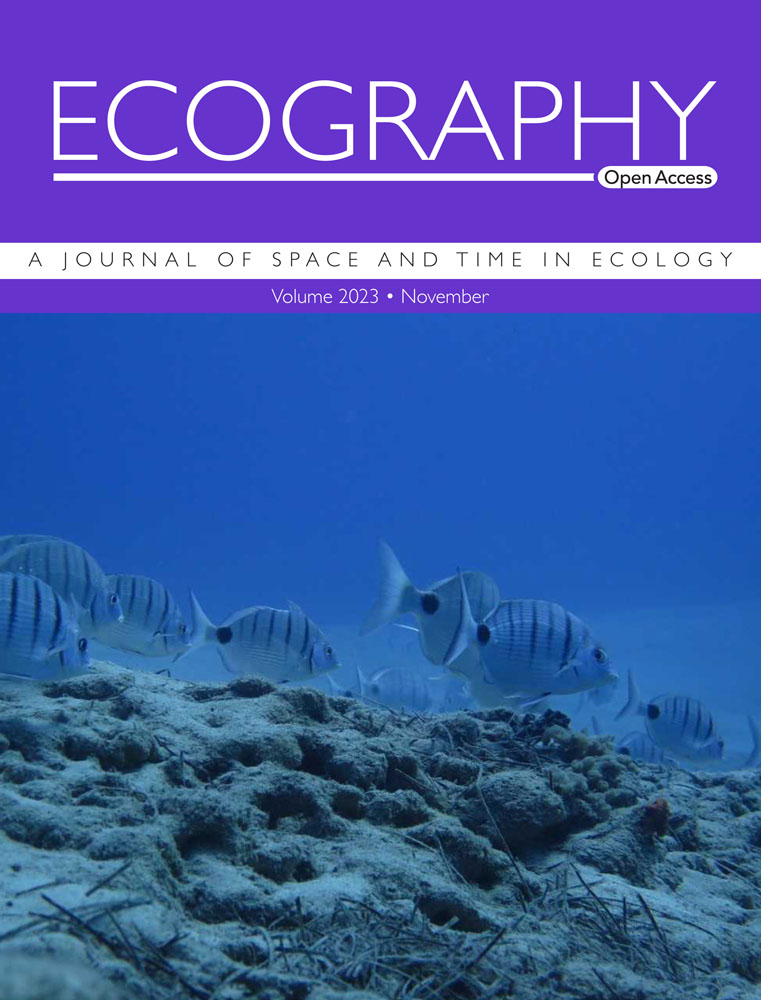The geography of connectivity shapes plant endemism hotspots
IF 5.4
1区 环境科学与生态学
Q1 BIODIVERSITY CONSERVATION
引用次数: 0
Abstract
The high biodiversity in mountains is attributed to species accumulation from dispersal, high habitat heterogeneity and local speciation. Landscape connectivity thereby influences colonization and speciation processes, making its net effect on biodiversity challenging to understand. This is especially true for complex and biologically diverse mountain systems, such as the Hengduan Mountains (HDM), with their remarkably high levels of endemism. Here, we mapped the distributions of 3165 endemic plant species (25% of the region's total richness) in the HDM and studied the complex interplay between landscape connectivity and climate as drivers of endemic richness, as well as endemic compositional turnover. We found that endemic richness peaks at elevations of 3000 to 4000 m a.s.l., about 1000 m higher than that of overall richness. Mean temperature of the warmest quarter, climate change velocity since the Last Glacial Maximum, and connectivity together explain patterns of both α- and β-diversity of endemism. Our models show strong explanatory power along the elevation gradient and across the landscape. Our findings point to a distinct, context-dependent role of landscape connectivity in shaping biodiversity. In the endemic hotspot of the central-western HDM, particularly within the Three-Parallel-Rivers Region, endemic diversity indices are negatively associated with landscape connectivity. In contrast, we found a positive association between endemic richness and connectivity in the northern and southern HDM, which have overall lower endemism levels. This context-dependent effect of the connectivity–richness relationship highlights the complex influences of geomorphological processes on endemic patterns at a regional spatial scale.地理上的连通性塑造了植物特有的热点地区
山区生物多样性高的主要原因是物种分散积累、生境异质性高和局部物种形成。因此,景观连通性影响定植和物种形成过程,使其对生物多样性的净影响难以理解。这对于复杂和生物多样性的山地系统尤其如此,例如横断山脉(HDM),其特有程度非常高。在此,我们绘制了该地区3165种特有植物的分布图(占该地区总丰富度的25%),并研究了景观连通性和气候之间的复杂相互作用作为特有丰富度的驱动因素,以及特有成分的转换。地方性丰富度在海拔3000 ~ 4000 m处最高,比总体丰富度高约1000 m。最暖季平均气温、末次盛冰期以来的气候变化速度和连通性共同解释了地方性α-和β-多样性的格局。我们的模型沿海拔梯度和整个景观显示出很强的解释力。我们的研究结果表明,景观连通性在塑造生物多样性方面具有独特的、依赖于环境的作用。在青藏高原中西部地区,特别是三江并流地区,地方性多样性指数与景观连通性呈负相关。相比之下,我们发现北部和南部HDM的地方性丰富度与连通性之间存在正相关关系,这两个地区的地方性水平总体较低。这种连通性-丰富度关系的环境依赖效应凸显了地貌过程在区域空间尺度上对地方性格局的复杂影响。
本文章由计算机程序翻译,如有差异,请以英文原文为准。
求助全文
约1分钟内获得全文
求助全文
来源期刊

Ecography
环境科学-生态学
CiteScore
11.60
自引率
3.40%
发文量
122
审稿时长
8-16 weeks
期刊介绍:
ECOGRAPHY publishes exciting, novel, and important articles that significantly advance understanding of ecological or biodiversity patterns in space or time. Papers focusing on conservation or restoration are welcomed, provided they are anchored in ecological theory and convey a general message that goes beyond a single case study. We encourage papers that seek advancing the field through the development and testing of theory or methodology, or by proposing new tools for analysis or interpretation of ecological phenomena. Manuscripts are expected to address general principles in ecology, though they may do so using a specific model system if they adequately frame the problem relative to a generalized ecological question or problem.
Purely descriptive papers are considered only if breaking new ground and/or describing patterns seldom explored. Studies focused on a single species or single location are generally discouraged unless they make a significant contribution to advancing general theory or understanding of biodiversity patterns and processes. Manuscripts merely confirming or marginally extending results of previous work are unlikely to be considered in Ecography.
Papers are judged by virtue of their originality, appeal to general interest, and their contribution to new developments in studies of spatial and temporal ecological patterns. There are no biases with regard to taxon, biome, or biogeographical area.
 求助内容:
求助内容: 应助结果提醒方式:
应助结果提醒方式:


